Winter is officially over. AC’s are getting serviced and one can feel the warmth of sun in the afternoons. Whether we like or not, summer is slowly settling in. And normally in India, summer is welcomed by the Holi festival. Holi, as we know, is the festival of color. People tend to forgive and forget while playing with colors. So, this blogpost is on Holi and its counterpart- Bhang sherbet in Kolkata.
The origin of Holi
The origin of Holi lies in the ancient Indian texts. Be it the story of Krishna and Radha, or be it of the Narsimha from Vishnupuran, my personal favorite is the tale of Kama and Rati. Lord Shiva was doing his meditation and Durga was hell-bent, probably to talk to him. Now we don’t know whether it was something really urgent or not, but the story says that she sought help from the lord of love, Kamadeva on Vasant Panchami. The arrow was shot and the angry Lord Shiva opened his third eye. Kamadeva was reduced to ashes. Kamadeva’s wife Rati performs her own meditative asceticism for forty days and Shiva understands and forgives Kamadeva. He’s again restored to life. And thus, after forty days from the Vasant Panchami, love is returned and Holi is celebrated everywhere. Please check the story here.
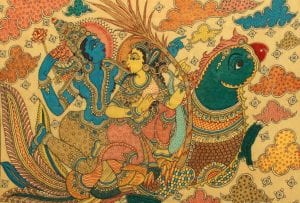
P.C: https://vedicfeed.com/kama-deva-and-rati/
Rasa-tarangini Tika:
Piyushgranti is a type of jilepi; pancamrita is a mixture of yogurt, milk, ghee, honey and sugar.“Oh child Lalite! You can prepare rasala, and Vishakha can make sarab. You prepare shikharini, and daughter Champakalata will make matha.”
But, if throwing colors and forgetting is the primary part, definitely the second most interesting part of Holi are the Bhang Sherbet and food. While, in every Bengali household, mangso-bhat is the staple followed by some mishti, non-Bengali vegetarian households celebrate with the festive food and lots of sweets. But what is common in India, across communities, is the bhang sherbet, lovingly called Thandai. But firstly, what is sherbet? And how did it come to us?
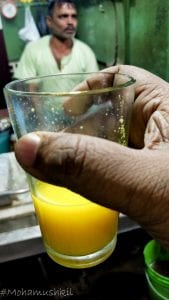
Sharbat story
Sharbat as a juice of fruits, herbs and/ or flowers have existed for long in the Muslim community. Even we can see its mention in the famous fable “A thousand and one night”. The word sharbat is derived from the Arabic word Shariba, which means “To drink”. But surprisingly, in Indian mythology, we get to see the mention for Sharbat- in the Gobinda Lilamrata and even in Mahabharata. If we look deep into history, the Ottoman Turks drank Sharbat before every course in their meal. In British culture, Lord Byron wrote poems on Sharbat in 1813, when he tasted them in Istambul. And two centuries before that, philosopher Francis Bacon spoke of Sharbat in 1626. But sherbet was introduced in India by Emperor Baabar.
“Give me a sun, I care not how hot, and sherbet, I care not how cool, and my Heaven is as easily made as your Persian’s.”- Lorb Byron in 1813
In villages in eastern Turkey, after the dowry is agreed, the groom’s family comes to the bride’s house and there’s the long-necked ibrik, filled with rose sharbat. The woman who has drunk sherbet is said to have accepted the groom’s demands. Even in ancient India and Afganistan, once the groom’s family has offered presents, the bride’s family reciprocates by offering Sharbat.
Govinda Lilamrta Verse 43-46
“Oh Putri, Radhe! My Krishna is very fond of piyushgranti. So after making it, dump it within pancamrita, adding camphor, cardamom and other spices.”
And when this sharbat is mixed with Bhang, it’s elevated to a different level. Bhang, as we said, is known to be the favorite drink of lord Shiva. We can find its mention in the ancient texts. Now, we have a confusion between what is Bhang and what is siddhi. Let’s try to demystify the two.
Thandai/ Bhang/ Siddhi
Thandai is a sharbat with a very special recipe. Imagine a drink with Milk as a base, where dry fruits, melon seeds etc are used as thickening agents and fennel, cardamom and rose petals are used for the flavor and aroma. Peppercorns and ginger powder are used to balance the sweetness. Yes, ladies and not-so-gentlemen, that’s thandai for you. We can easily understand, why lord shiva loved this drink. Bhang is the paste of buds and leaves of the cannabis. It’s been used in the Indian subcontinent from around 1000 BC and is taken in sharbat as well as Balls or Golis. In a few shops of Kolkata, some culinary geniuses even offer a Bhang Pakora.
While consumption in limited quantity has positive effects on the human body, hallucination is quite common after heavy consumption. And the fun is, the effect starts after an hour of consumption. So, while the innocent person keeps on gulping down the supreme tasty Bhang sherbet, with the confidence that he or she’s just fine- the effect hits him hard after some time. I’m not saying the effect is bad. In fact, during my youth, I was known to laugh for quite a few hours, for reason unknown even to me.
Shiv shakti Bhang Shop, B K Paul Avenue
But jokes apart, let’s come to the basic question- where to get it? In North Kolkata, Bhang is quite readily available in the local sherbet shops. During the evening time, when a self-respecting Kolkattan comes out for his favorite evening time adda, a glass of sharbat is what keeps his cool-quotient.
If you’re in North Kolkata, please go to Sovabazar metro station. Walk for 5 minutes and you’ll reach the crossing of B K Pal Avenue and the tram lane towards Kumartuli. Ask anyone and you’ll find the old sherbet shop on your left. They churn out multiple varieties, but Thandai is the crowd-pleaser, at 30/- a glass. Bhang golis (roundels) are sold separately. And they are priced as per the quality. Starting from 10/- a piece, it goes up to 18/- a piece for the nicely shaped ones topped with dry fruits and served in a paper cup. For the customers, you need to ask them and they’ll prepare a special mixup of your favorite Sherbet with one of the golis. If you’re planning to drive back, please be careful. A good dose of bhang needs some Rasogolla and Chittaranjan Sweets, the king of Rasogolla, which is just 5 minutes drive from this place.
Bhang around Burabazar
Around Burabazar, there are multiple outlets selling a good bhang Sharbat, but the Lyangra sharbat shop opposite the Jain Mandir is quite famous in the locality. In fact, many other shops are there around who sell the stuff, but how many would be ready to accept it in an open forum, is the question. In South Kolkata, one can get some near the Jagu Bazaar, but secrecy is the keyword here.
Rather I must say, getting the food items is much easier. Almost all the premium hotels in the city have their Holi Special package lined up. A party with DJ music, good food with premium booze (maybe with a stay package) comes at a reasonable price. You just need to get your family and friends and the setup is done for you. Many other party zones like the amusement parks are also offering the same. But according to me, the best Holi/ dol parties take place at your or your friend’s terrace. Gather a few of your friends, plan the bhang, booze and mutton curry. Get your friends to be the DJ- life is good. Have some Rasogolla or Gujiya for the strong ones who are able to stand after the party and what else does one want in life?
Play a responsible Holi and share your Holi foodie story in the comments section.

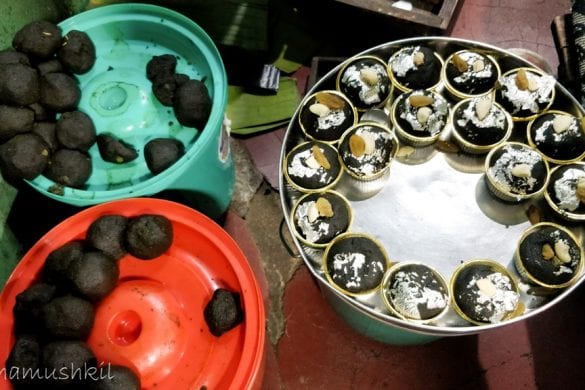
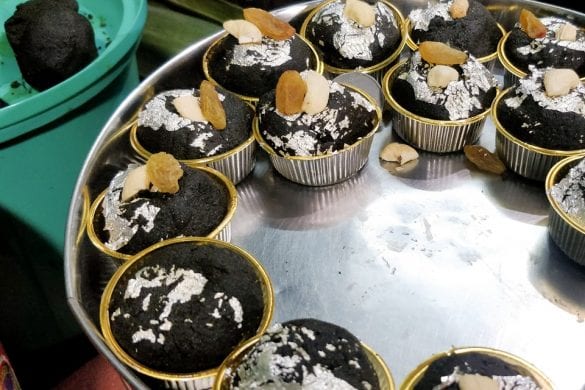
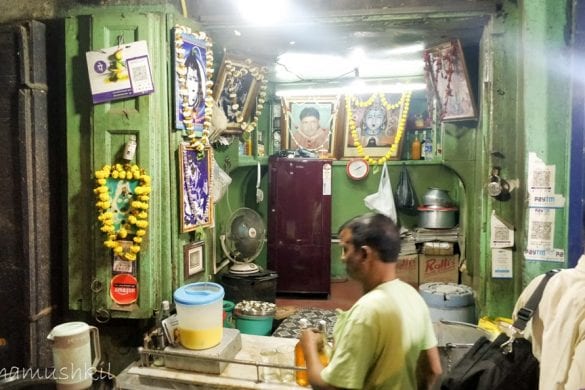
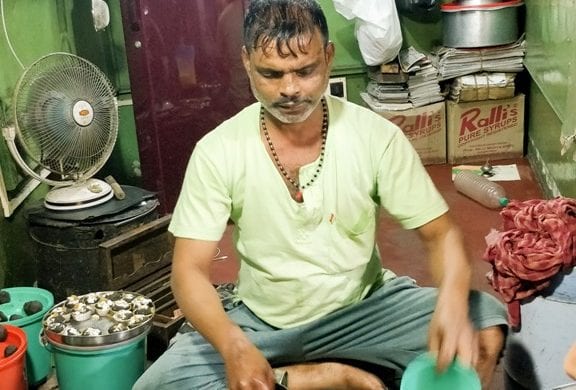

1 comment
Hi Indrajit Da! Awesome article! I’m also an ardent follower of Shivshakti shop. By any chance, do you happen to have the contact number of that shop or of Gaurav Gupta? It’s lockdown time, so want to know if it’s open before going there.